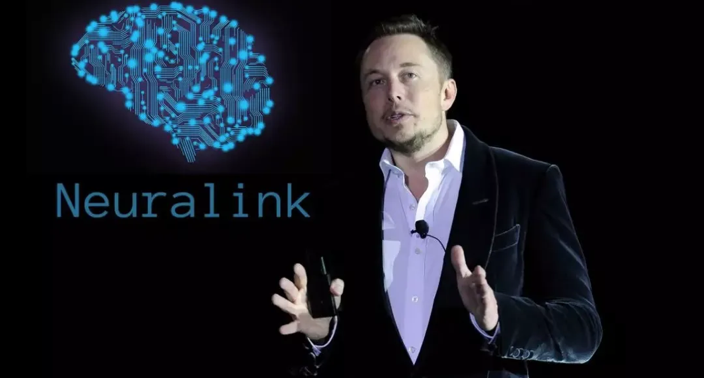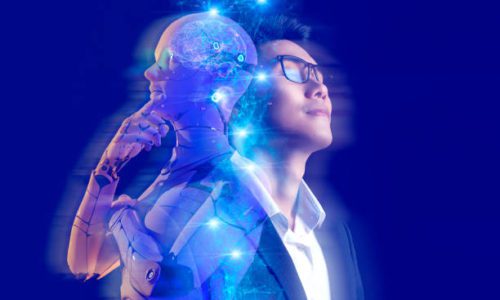Not Flying Cars — But 5 New Technologies That Will Revolutionize the Future
- James Wilson
- 0 Comments

Have you ever thought about the different new technologies that will revolutionize the future? Doc Brown once said that we won’t be flying around in in Lamborghinis or Ferraris in the sky just yet. But he was wrong.
Though there aren’t any flying cars just yet, the future isn’t as dull as it looks. There’s a whole new level of ridiculousness with all the novel research. From frog cell robots to quantum computers, we’re going to take a look at what crazy ideas science is bringing to life.
Quantum Computing

Even if you put in 4 $3000 graphics cards and get 2 simultaneous processes running, your beefed up computer won’t match the power of quantum supercomputers. Even the supercomputer running at NASA won’t be able to compete. The question you might be wondering is — what makes quantum computers so special?
It involves some really weird particle physics- entanglement and superimposition. But to use a metaphor -imagine you need to find the fastest way from your house to your office. So each day, you try out new routes. Some routes you find are better than others, other routes are just downright horrible. It takes you five years to find the perfect route.
Now a quantum computer does this differently. Instead of taking 5 years, it takes a day. Just imagine multiple realities of you — on the same day taking all the possible routes. And the moment one of those versions of you finds that perfect route, all realities collapse into that one perfect route. So instead of 5 years, it just took you 1 day (and several million simulations) to discover it.

If you’re looking to understand the physics behind Quantum computing, look no further than L. It won’t bore you with too many details in Math — and there’s a bonus. You get to know what the minds of physicists are like. You’re going to realize that despite their genius, they are just as human as the rest of us.
Engineered Cells

Source: Popular Mechanics
The greatest and most complex computers in the world don’t run on electricity — but on food and water. That’s right, the greatest computing devices in the world are actually our brains. The greatest tools in the world are our hands. Scientists are now trying to find a way to configure and use these cells to make the greatest possible tools on the planet.
And there’s been a major start. Researchers at Tufts University and the University of Vermont have been able to use frog cells to make machines. Don’t worry, not giant frog monsters or abominations, but basic moving cell designs. Dubbed “xenobots’’, they are designed to move in a single direction but would fail to do so when flipped.

Now if you’re looking to make living robots of you’re own — tough luck, DIY stem cell kits don’t exist quite yet. But you can begin your living robots journey with basic robots in the meantime. For starters — you can take a look at the Lewan Soul Robotic-arm — which comes with a programmable Arduino. It seems simple enough but let me tell you — programming this arm takes a whole lot of coffee and sweat.
Practice long enough and who knows — this might get you into a career in robotics, and maybe even bioengineering if you get far enough.
 Drone Swarms
Drone Swarms
If there’s one thing that constantly amazes programmers and biologists, it’s the organization’s abilities of eusocial insects. Eusocial insects can cooperate as if they were a single consciousness, each individual acting almost like a cell of a much larger life-form. Fire ants can form rafts to survive floods, and bees can coordinate to collect all pollen in a 5km radius (Tovey 2017, Klein 2019).
Finding a way to imitate the complex swarming
the behavior has potential and uses for many industries. Imagine organized swarms of flying drones delivering packages to homes all over — making faster and more efficient trips than regular mailmen. Or just imagine farmers employing drones to herd sheep or help monitor crop yields?
If you’re looking to get your hand on drones and programming, you might as well try your hand on programming your drone! The Robolink-CoDrone-Pro Programmable is a small drone that fits in the size of your hand, and comes with an interface that you can program! Give it a try if you’re interested in getting in the drone industry!
Fusion Reactors
Its been almost 100 years since nuclear fission was discovered by Otto Han and his assistant Fritz Strassmann. Since harnessing the atom, we’ve used it to power our homes and also use it to build devastating nuclear weapons. However nuclear fission has a couple of issues. For one, the left-over irradiated waste is near-impossible to treat — and the only way to get rid of it is to store it until it stops radiating.
The next logical step from nuclear fission is nuclear fusion. Whereas nuclear fission generates its energy from breaking atom bonds, nuclear fusion does by building bonds together. Nuclear fusion is the reaction that powers the stars. As it currently stands, attempts at fusion still use up energy rather than make it. But in the next decade or so, fusion energy will power us for perhaps all eternity. Hopefully, Fusion power takes us away from the dangers of nuclear fission. The dangers are very much real — and not just in bombs. The risks of Nuclear power plant failures is a very much real risk — Chernobyl is just one very real example. And if you’d like to know more about what caused one of the greatest nuclear disasters in history, go give “Midnight in Chernobyl: The Untold Story of the World’s Greatest Nuclear Disaster” a read. Adam Higginbotham’s book chills you as it narrates the story of what caused the biggest nuclear disaster in history.
Brain-Computer Interfaces

The closest person we have to a real-life Iron Man
Troubled with Math in Highschool? Ever wondered if you can just simply download a program that allowed you to do algebra like the brilliant John Nash? Or are you interested in learning Kung-Fu in under a minute? Getting to upload and download data to our brains just like Neo in the Matrix is soon becoming a reality. Scientists at the HRL Information and System Sciences Laboratory believe their research will make get this ready in a snap.

If you’re into cyborgs and all that, an alternative involves having Elon Musk (yes, him) stick a chip in your brain. Neuralink, another of Elon Musk’s business ventures into the future, is dedicating their research to developing brain microchips. The brain chips will first be used to develop brain damage and impairment — but as they see it Neuralink will eventually use this technology to develop brain chips for human enhancement (Lopatto, 2019).
Soon, very soon, you’ll be calling your friends, watching a movie, doing complex equations all within the confines of your head. However — who knows the potential dangers of such technology. What if the brain chips just suddenly go haywire and take over our psyche?
Such a horrifying idea is explored in Michael Crichton’s “The Terminal Man”. If you haven’t heard of him — all you need to know he was the writer of the beloved Jurassic Park. And his sci-fi thriller book, the Terminal Man, is much more thrilling than Jurassic Park.
Did you know that there are many other technologies emerging in the next few years. Some have already been presented to the public but there are more other inventions that are gradually making their way to the market. The world is full of surprises and I’m sure you can’t wait to be surprised in the next couple of years.
References:
Choe, J., Coffman, B. A., Bergstedt, D. T., Ziegler, M. D., & Phillips, M. E. (2016). Transcranial Direct Current Stimulation Modulates Neuronal Activity and Learning in Pilot Training. Frontiers in Human Neuroscience, 10, 34. https://bit.ly/3bVZZqN
Fernandez, E. (2020). The US Comes One Step Closer To Producing Commercial Fusion Power. Forbes. https://bit.ly/2z4RESN
Lopatto, E. (2019). Elon Musk unveils Neuralink’s plans for brain-reading ‘threads’ and a robot to insert them. The Verge. https://www.theverge.com/2019/7/16/20697123/elon-musk-neuralink-brain-reading-thread-robot
Klein, S., Pasquaretta, C., He, X. J., Perry, C., Søvik, E., Devaud, J.-M., Barron, A. B., & Lihoreau, M. (2019). Honey bees increase their foraging performance and frequency of pollen trips through experience. Scientific Reports, 9(1), 6778. https://bit.ly/2St3f52
Kriegman, S., Blackiston, D., Levin, M., & Bongard, J. (2020). A scalable pipeline for designing reconfigurable organisms. Proceedings of the National Academy of Sciences, 117(4), 1853. https://bit.ly/3d6foVn
Kulshreshth, A., Anand, A., & Lakanpal, A. (2019). Neuralink- An Elon Musk Start-up Achieve symbiosis with Artificial Intelligence (p. 109). https://bit.ly/3aR5y8l
Tovey, C. (2017). How Fire Ants Form Giant Rafts to Survive Floods. Scientific American. Retrieved from: https://bit.ly/3aZayrA









